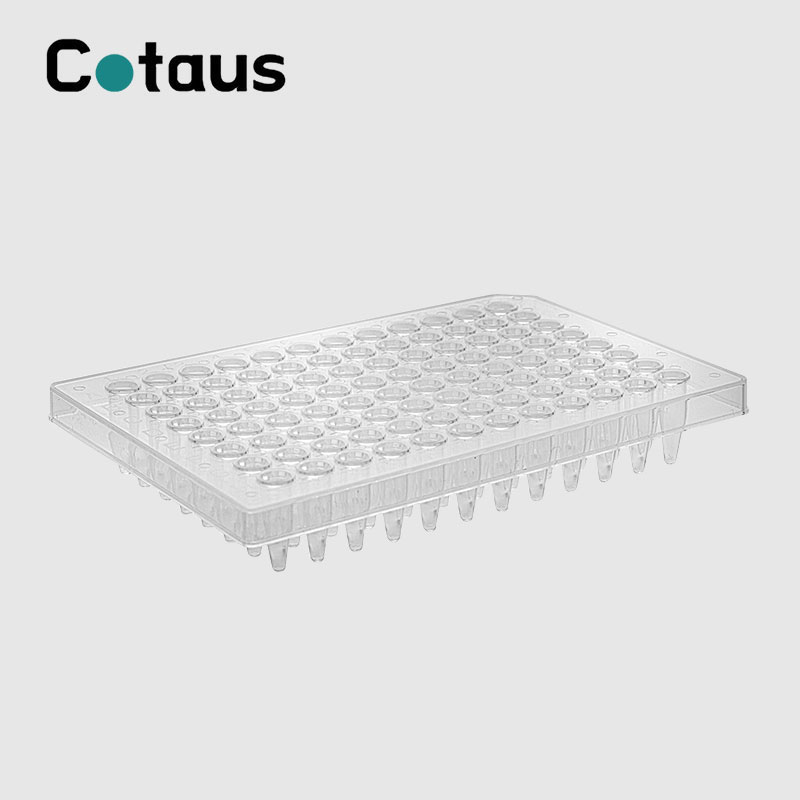Exploring Sealing Mechanisms: Transparent Half-Skirt PCR Plates vs. Traditional Designs
2024-03-22
In the realm of molecular biology research, the integrity of PCR (Polymerase Chain Reaction) experiments is paramount. One critical aspect that contributes to the success of PCR assays is the sealing mechanism employed in PCR plates. While traditional PCR plates have long been a mainstay in laboratories, the emergence of transparent half-skirt PCR plates has brought innovations in sealing mechanisms. In this blog, we'll explore how the sealing mechanism differs between transparent half-skirt PCR plates and other PCR plate designs, shedding light on their respective advantages and considerations.
Traditional PCR Plates:
Traditional PCR plates typically feature a full skirt that extends around the entire perimeter of the plate. The sealing mechanism for these plates often involves the use of adhesive films, heat seals, or cap strips. Adhesive films are transparent films that adhere to the surface of the plate, forming a tight seal around each well. Heat seals, on the other hand, utilize a heat source to melt the sealing film onto the plate, creating a secure barrier against sample evaporation and contamination. Cap strips are individual caps that snap onto each well, providing a physical barrier to prevent sample loss and cross-contamination.
While these sealing mechanisms are effective in maintaining sample integrity, they may pose challenges in terms of ease of use and sealing consistency. Adhesive films can be difficult to apply evenly, leading to variations in sealing quality between wells. Heat sealing requires specialized equipment and may not be suitable for all laboratories. Cap strips may become dislodged during handling or storage, compromising the integrity of the PCR assay.
Transparent Half-Skirt PCR Plates:
Transparent half-skirt PCR plates offer a unique sealing mechanism that differs from traditional designs. Due to their reduced skirt height, transparent half-skirt PCR plates are compatible with a wider range of sealing options, including adhesive films, heat seals, and cap strips. However, the reduced skirt height may pose challenges when using certain sealing methods, particularly heat sealing, which relies on a flat surface for optimal sealing efficiency.
To address this challenge, manufacturers of transparent half-skirt PCR plates often provide specialized sealing accessories designed specifically for use with these plates. These accessories may include low-profile heat seals or adhesive films with extended skirts to ensure proper sealing coverage over the wells. Additionally, some transparent half-skirt PCR plates feature raised rims around each well, providing a flat surface for consistent heat sealing.
Advantages and Considerations:
The sealing mechanism employed in transparent half-skirt PCR plates offers several advantages over traditional designs. The reduced skirt height allows for easier access to sample wells and facilitates visual inspection of sample contents. Additionally, the compatibility with a variety of sealing options provides researchers with flexibility in choosing the most suitable sealing method for their specific experimental needs.
However, researchers should be mindful of potential limitations associated with the sealing mechanism of transparent half-skirt PCR plates. The reduced skirt height may increase the risk of sample evaporation, particularly during prolonged PCR cycling. Additionally, certain sealing methods may require specialized accessories or equipment to ensure proper sealing efficiency.
Conclusion:
In conclusion, the sealing mechanism differs between transparent half-skirt PCR plates and traditional PCR plate designs, each offering its own set of advantages and considerations. While traditional PCR plates rely on full skirts and standard sealing methods, transparent half-skirt PCR plates provide researchers with increased flexibility and accessibility in choosing sealing options. By understanding the differences in sealing mechanisms, researchers can make informed decisions when selecting PCR plates for their experiments, ultimately contributing to the success and reliability of their PCR assays.



